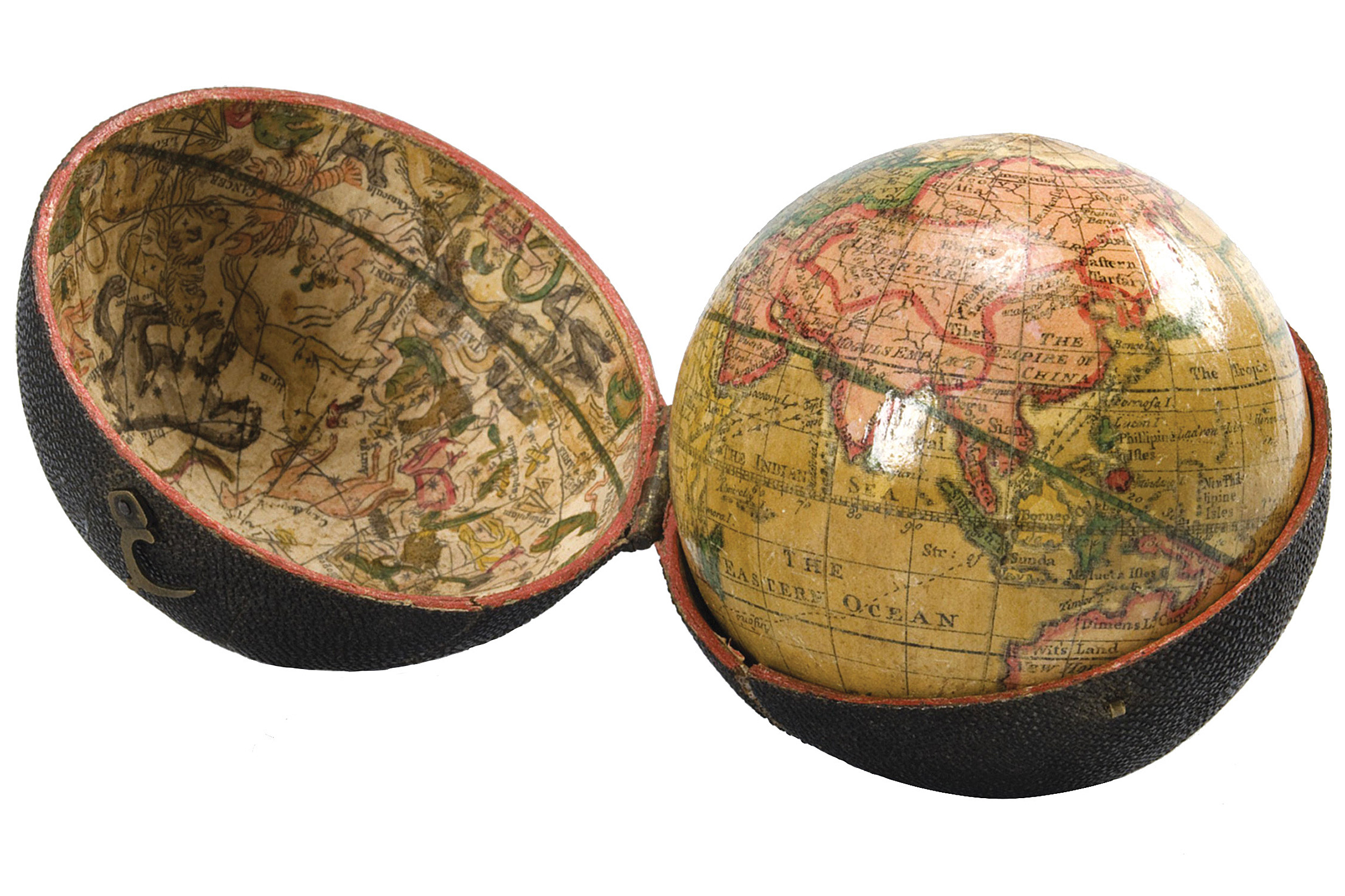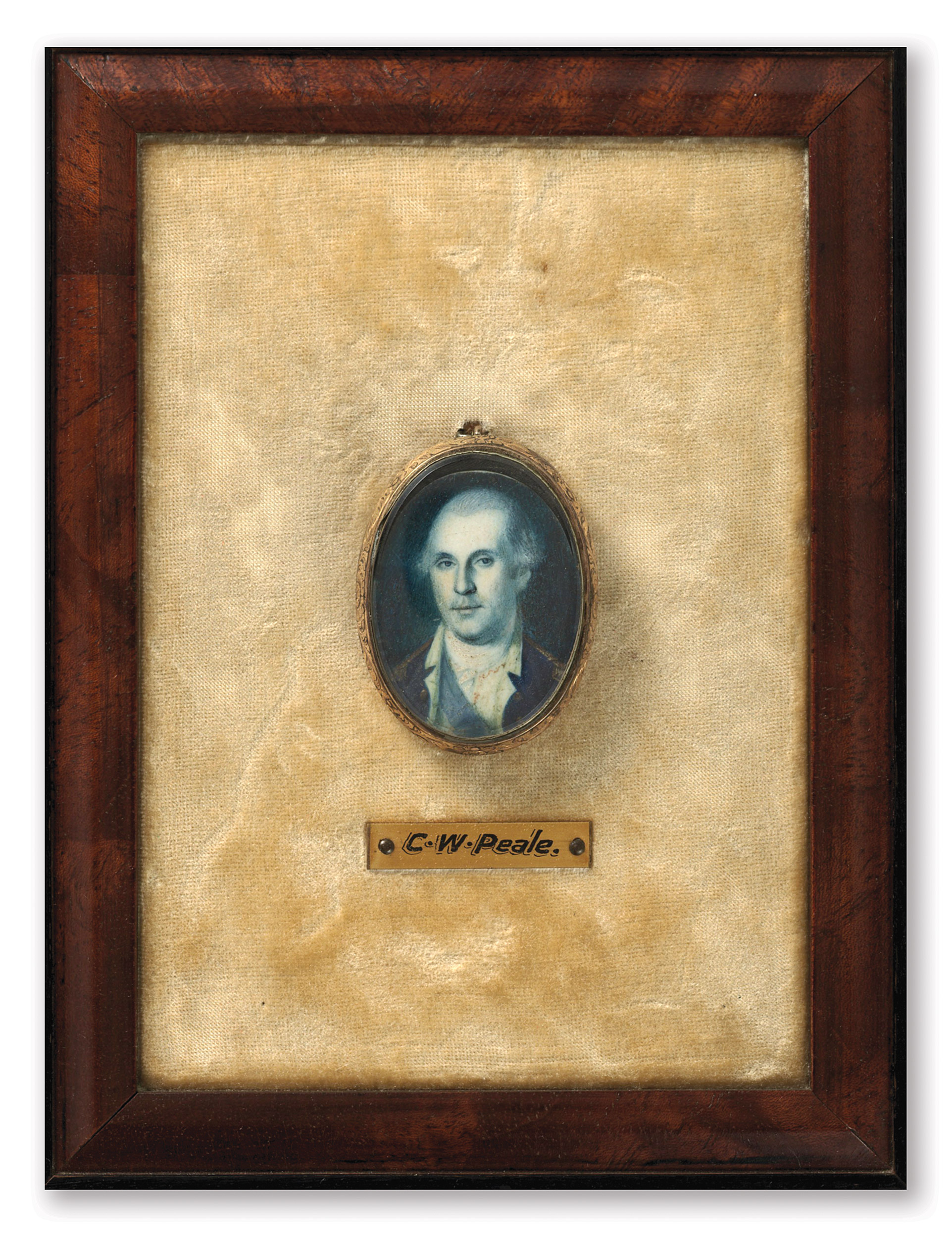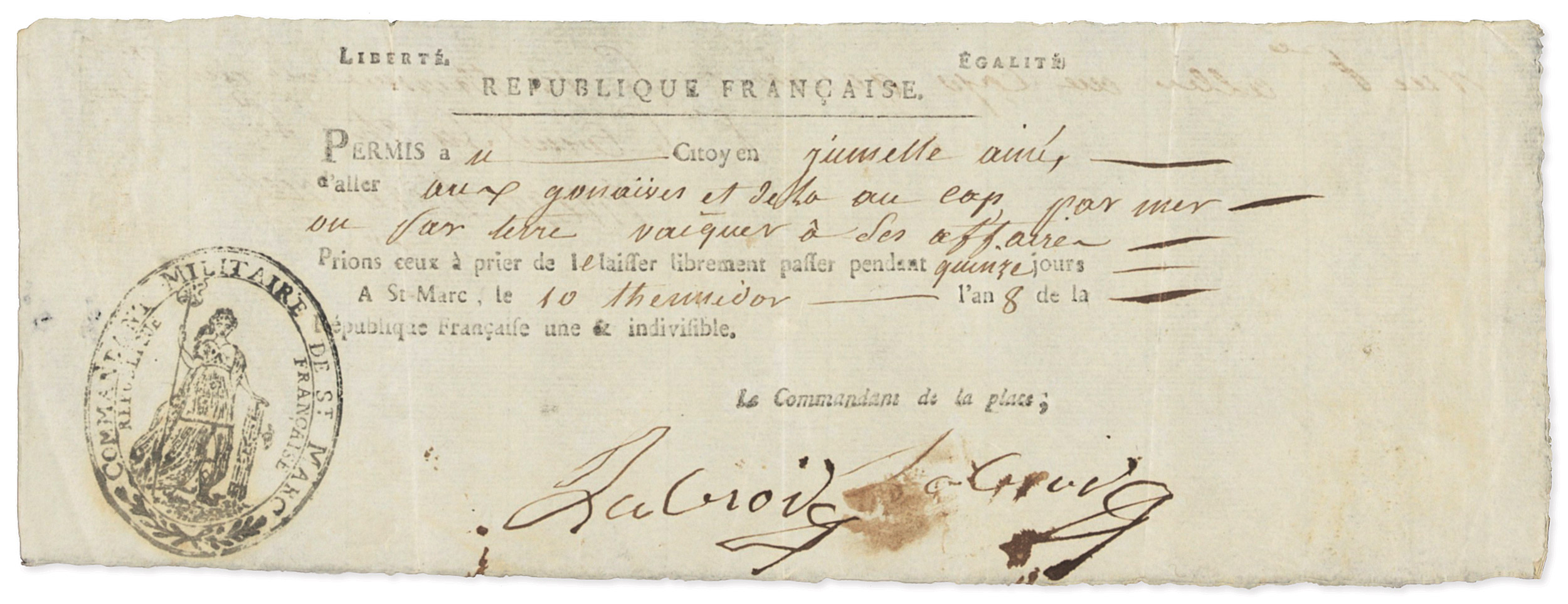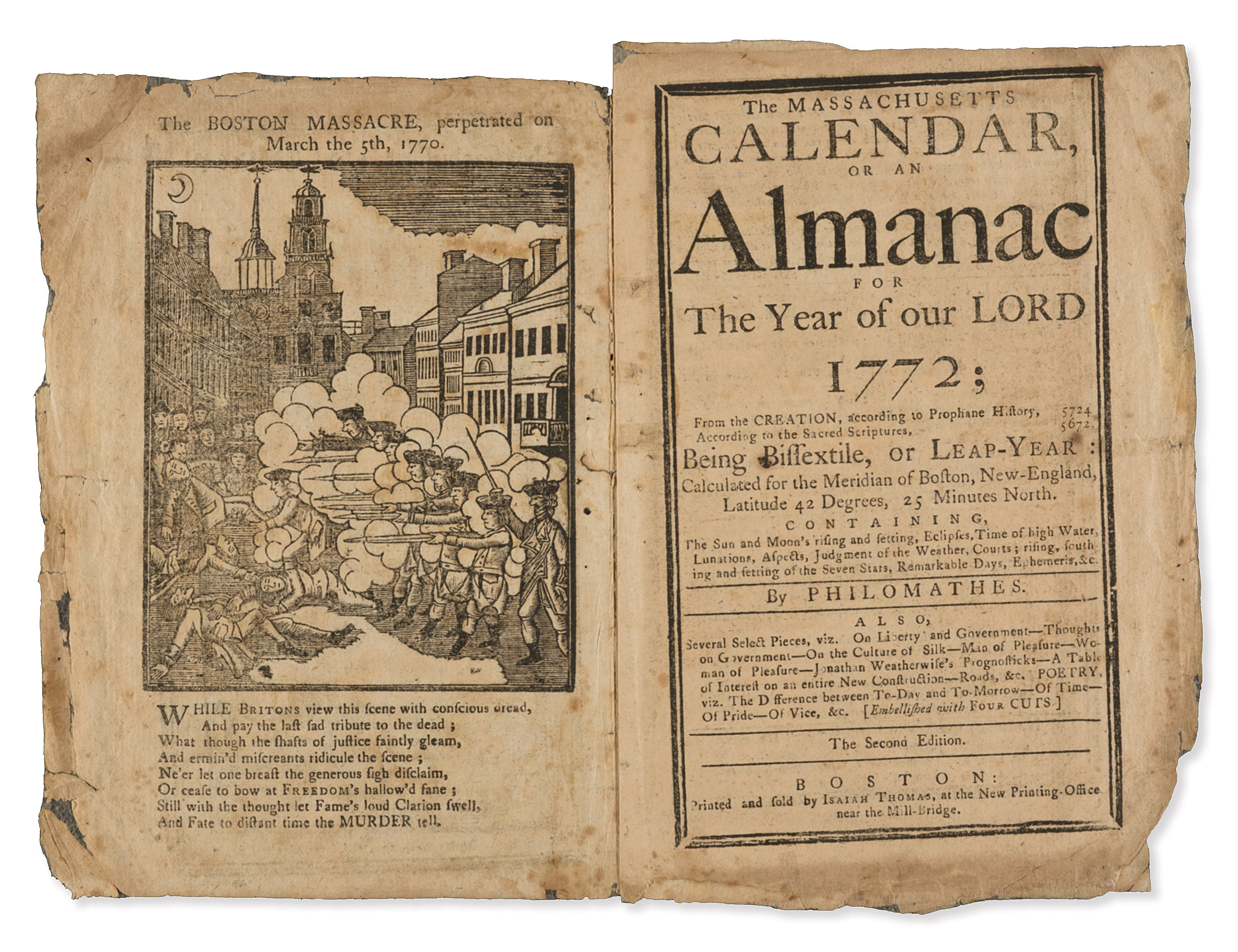
This 3-inch globe, created in 1757 by Scottish astronomer James Ferguson, depicts California as a peninsula and Admiral George Anson’s circumnavigation route. Its wooden case wrapped in shark skin shows the celestial hemispheres.
Courtesy of Harvard University Archives, Harvard Library
Colonial North America at Harvard Library
Peek into country’s early days with digital collection
For six years, Harvard Library has been working to make its vast collection of archival and manuscript materials from the colonial era accessible online. Today, approximately 650,000 digitized pages of handmade materials from the 17th and 18th centuries are available free to the public. Held in 14 repositories around the University, the works tell the tale of economic and social life in the colonies that would become the United States.
European exploration and colonialism in North America took place over several centuries and affected the lives of millions of people across multiple continents. The breadth and scope of these materials reflect this long history and its many dimensions. More than 200 years of colonial history are represented in these items, and their diversity in focus, format, and content reflects the complexities of the era in which they were created.
Each item in the collection is connected to countless stories — of lives lived quietly and extravagantly, of encounters peaceful and volatile, and of places near and far. These documents, illustrations, and letters provide an opportunity to travel back in time, to rethink familiar stories and discover new ones.
Major support for this multiyear project was generously provided by Arcadia, The Polonsky Foundation, James B. Adler through the Adler Preservation Fund, and Peter H. Darrow and William O. Nutting through a fund for the Colonial North America Digitization Project at the Harvard Library.

Courtesy of Harvard University Archives, Harvard Library
An image of Hollis Hall
This gouache and ink by an unknown artist depicts Hollis Hall, built as a dormitory “from an appropriation of Pound 3,000 made by the General Court in 1761,” according to an 1876 Harvard Crimson story. It was struck by lightning in 1768, used as troop barracks in 1775–76, and survived a fire a century later. It has housed some of Harvard’s most famous alumni, including Ralph Waldo Emerson, Henry David Thoreau, and John Updike.

Courtesy of Houghton Library, Harvard Library
Washington portrait
Just an inch and an eighth wide, this watercolor on ivory of George Washington in his early 40s was painted by Charles Willson Peale in 1775, the year Washington became the commander in chief of the Continental Army (signified by the blue sash). Hannah Erwin Israel, the original owner of the portrait, claimed Washington gave it to her after she provided him with information about the movements of the British Army during the Revolutionary War.

Courtesy of Schlesinger Library, Radcliffe Institute for Advanced Study
French Revolution travel document
An 1800 laisser-passer, or 15-day permit to travel around the French colony of Saint-Domingue (now Haiti), is a reminder that Colonial North America was not just the British colonies on the Eastern Seaboard; the Caribbean was also key.

Images courtesy of Harvard University Archives, Harvard Library
John Winthrop’s almanacs
A detail in the hand of John Winthrop (below), a descendant of a leading figure in the founding of Massachusetts, from his 1775 almanac. The back cover of Winthrop’s 1772 almanac (above) shows Paul Revere’s engraving of the Boston Massacre; inside the book, Winthrop’s wife, Hannah, recorded the births and deaths in the community as well as a domestic inventory including butter, eggs, walnuts, pigeons, and wood for the kitchen chimney.








